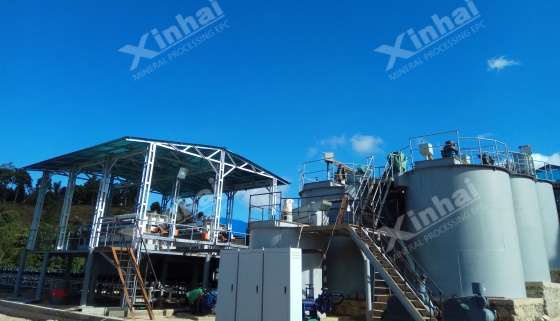If you want to know more information (such as product/process price, etc.), please contact us 24-hour telephone
As Africa’s largest economy and most populous country, Nigeria’s mining potential has long been overshadowed by its oil industry. In recent years, however, the government has actively promoted economic diversification, with mining identified as a key growth sector. Below is a comprehensive analysis of Nigeria’s mining investment environment, covering resource endowment, policy framework, infrastructure, risks, and opportunities.
Nigeria boasts over 44 proven mineral types, yet less than 1% have been commercially exploited. Key resources include:
1. Strategic Solid Minerals
Tin & Columbite: Nigeria ranks as the world’s sixth-largest tin producer, with the Jos Plateau as the primary deposit. Columbite reserves are among Africa’s largest.
Lead-Zinc: Abundant in the Benue Trough but underdeveloped due to outdated extraction methods.
Gold: The Zamfara gold belt in the northwest has attracted international interest, though artisanal mining dominates.
Lithium: High-grade deposits discovered in Nassarawa State (2022), with exploration ongoing.
2. Industrial Minerals
Bitumen: Ogun State holds the world’s second-largest reserves (42 billion tons) but remains underexploited.
Limestone & Kaolin: Widely used in cement and ceramics, primarily extracted by local firms.
3. Rare Earth & Radioactive Minerals
Uranium, thorium, and rare earth elements are found in northern regions but lack systematic development.

1. Foreign Investment & Ownership
100% foreign ownership permitted in mining projects, with no mandatory local equity requirements (unlike Zimbabwe).
Licensing:
Exploration Licence: Valid for 3 years, extendable by 2 years.
Mining Lease: Up to 25 years, contingent on feasibility studies and environmental assessments.
Community Rights: Companies must sign a Community Development Agreement (CDA), allocating ≥3% of net profits to local projects.
2. Fiscal Incentives
Tax Holidays: 3–5 years (based on investment size and location).
Duty Waivers: Exemptions on mining equipment imports; VAT refunds.
Royalty Rates:
| Mineral | Rate |
| Gold | 3% |
| Lithium | 5% |
| Coal | 5% |
| Industrial Minerals | 2% |
3. Key Regulatory Updates
Nigerian Minerals and Mining Act (2023 Amendment):
Establishes the Solid Minerals Development Fund (SMDF) for project financing.
Mandates 50% of mining transactions through local banks to ease dollar shortages.
Anti-Money Laundering: Mining revenues must be reported via the "Eagle Eye" government monitoring system.
1. Power Shortages
Only 55% national electrification; mines rely on diesel generators or solar systems, increasing costs.
2. Transport Bottlenecks
Rail: Two main lines (Lagos-Kano, Port Harcourt-Maiduguri) with limited capacity.
Ports: Chronic congestion at Lagos/Apapa ports delays mineral exports by 7–10 days.
3. Weak Local Supply Chains
Mining equipment and chemicals are imported; local manufacturing is limited to basic tools.
1. Security Threats
Northern mines face attacks by armed groups (e.g., Boko Haram); farmer-herder conflicts in central regions.
Clashes between artisanal miners and corporations (e.g., 2023 Niger State gold mine violence).
2. Policy Inconsistencies
Overlapping federal/state regulations; some states impose arbitrary taxes (e.g., Kaduna’s "mineral transport fee").
Corruption: Ranked 32nd out of 54 African countries in Transparency International’s 2023 index.
3. Currency & Forex Risks
Central bank forex shortages delay profit repatriation (4–6 months processing).
Naira (NGN) volatility: Official rate (2023): $1 = ₦460; parallel market: ₦750.
1. High-Value Mineral Sectors
Lithium: Rising global EV demand makes Nassarawa’s lithium belt a hotspot (similar to Zimbabwe’s projects).
Rare Earth Processing: Leverage low-cost labor to establish refining hubs for semi-processed exports.
2. Government-Prioritized Projects
Coal-Steel Complex: Planned integrated steel plant in Kogi State (with linked coking coal mining).
Local Beneficiation: Tax breaks for ore-processing plants (e.g., 5% import duty on equipment).
3. Chinese Investor Case Studies
CGCOC Group: Granite mining and construction materials in Oyo State (2M-ton annual capacity).
Zijin Mining: Acquired gold exploration licenses in northwest Nigeria (2023).
1. Risk Mitigation
Political risk insurance (e.g., MIGA, African Trade Insurance Agency).
Hire private security or partner with military for site protection.
2. Local Integration
Employ youth from host communities for low-skill jobs; engage traditional leaders.
Invest in vocational training (e.g., partnerships with mining schools).
3. Industry Synergies
Link limestone mines to cement giants (e.g., Dangote Group).
Develop "mining-energy" projects (e.g., coal-fired captive power plants).
Conclusion
Nigeria’s mining sector is akin to "gold wrapped in thorns"—rich in resources and policy incentives yet hampered by infrastructure gaps, security risks, and bureaucratic hurdles. Investors should:
Target high-margin minerals (lithium, rare earths).
Build local partnerships to navigate community dynamics.
Adopt phased investments (pilot before scaling).
While local experience and risk tolerance are vital in the short term, Nigeria’s Mining Roadmap 2030 could position it as West Africa’s mining hub in the long run.